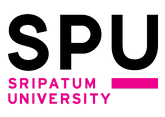Please use this identifier to cite or link to this item:
http://dspace.spu.ac.th/handle/123456789/6335| Title: | แบบจำลองความได้เปรียบในการแข่งขันของธุรกิจขนส่งและโลจิสติกส์ ในประเทศไทย |
| Other Titles: | THE COMPETITIVE ADVANTAGE MODEL OF TRANSPORTATION AND LOGISTICS BUSINESS |
| Authors: | จันทร์เพ็ญ วรรณารักษ์ วิชิต อู่อ้น กัลยารัตน์ ธีระธนชัยกุล |
| Keywords: | แบบจำลองความได้เปรียบในการแข่งขัน ธุรกิจขนส่งและโลจิสติกส์ ADVL MODEL |
| Issue Date: | December-2561 |
| Publisher: | มหาวิทยาลัยศรีปทุม |
| Citation: | จันทร์เพ็ญ วรรณารักษ์. วิชิต อู่อ้น.กัลยารัตน์ ธีระธนชัยกุล.(2561).แบบจำลองความได้เปรียบในการแข่งขันของธุรกิจขนส่งและโลจิสติกส์ในประเทศไทย. วารสาร มจร สังคมศาสตร์ปริทรรศน์, 7(4)), หน้า 264-276. |
| Abstract: | This research aims: (1) to study the factors that influence competitive advantage, business performance. (2) To study the influence of competitive advantage on business performance. (3) To model the competitive advantage model of transport business and logistics in Thailand. The sample of this research is drawn from 200 institutes. The sources of data are 2 executives of each Institute. The total number of people who provided data is 440. Using a multi-stage random sampling method, data was collected by a questionnaire during the period of August 2017. In total 396 questionnaires were returned, representing a response rate of 90%. The data was analyzed using technical analysis, structural equation model. The results of the research showed that: (1) Factors affecting consist of working system, human capital, business networking, technology capability and innovative organization. (2) All of five factors has a direct positive influence on the competitive advantage and indirect positive influence on business performance. (3) ADVL model simulations are consistent with empirical data based on a harmonized index of 6 indexes of accepted criteria. The index is: 2/df = 0.94, CFI = 1.00, GFI = 0.98, AGFI = 0.95, RMSEA = 0.000 และ SRMR = 0.0098. The ADVL model which includes seven core elements and 19 sub-elements as follows: (1) Working system has four components. (2) There are two components: in-human capital. (3) Business networking has three components. (4) Technology capability has three components. (5) Innovative organization has two components. (6) Competitive advantage has two components. Finally (7) Business performance has two components |
| URI: | http://dspace.spu.ac.th/handle/123456789/6335 |
| ISSN: | 22870121 |
| Appears in Collections: | GRA-02. บทความวิชาการ/วิจัย (วารสารระดับชาติ) |
Files in This Item:
| File | Description | Size | Format | |
|---|---|---|---|---|
| จันทร์เพ็ญ วรรณารักษ์ วิชิต อู่อ้น กัลยารัตน์ ธีระธนชัยกุล p264-267.pdf | 963.14 kB | Adobe PDF | View/Open |
Items in DSpace are protected by copyright, with all rights reserved, unless otherwise indicated.
Admin Tools
